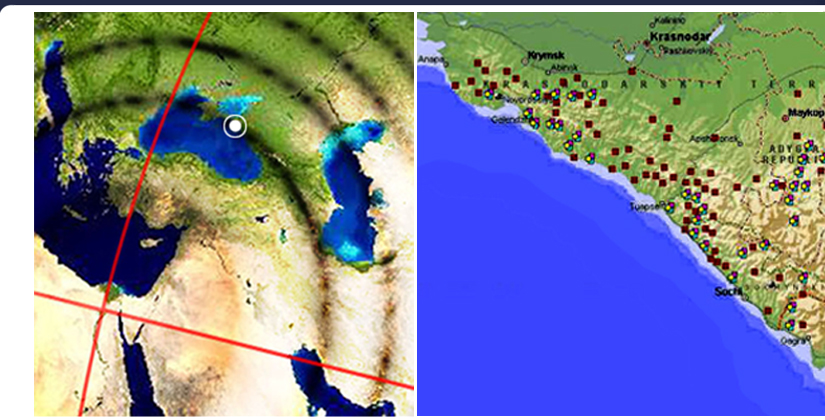Piezoelectric Dolmen in Gelendjik, Russia
Caucasian Megaliths in Cultural Context
By Dr. V. Trifonov of the Russian Academy of Sciences
September 11, 2000
Gelendjik - Dolmen, the huge ruins of ancient megalithic
chamber tombs, are the most striking, widespread and still
mysterious relics of the prehistoric Western Caucasus - a
far-away southeastern frontier of Europe. The more than
3.000 megalithic monuments registered to date fall within
an approximate fifteen hundred-year span. In spite of the
variety of Caucasian monuments, they show strong similarities with megaliths from different parts of Europe and Asia,
like the Iberian Peninsula, France, Great Britain, Ireland,
Netherlands, Germany, Denmark, Sweden, Israel and India.
A range of hypotheses have been put forward to explain
these similarities and the building of megaliths on the whole,
but still it remains unclear. A great pity is that the study of
Caucasian megaliths is that, for a long period, it has only
focused on the architectural features, to the detriment of
other aspects of the phenomenon. The proposed project
is an attempt to bridge the gap that separates the Caucasian megaliths from their cultural and ecological contexts,
taking advantage of comparative and contextual analysis.
The urgency of the Park Project has come about under unusual circumstances.
For centuries the dolmen have generally been ignored by society and weren't
considered part of local culture. Only in the last two years have these stone
structures attracted popular attention by local people and have in fact become
gathering places for local cults and the subject of sometimes-fantastic stories of
origin. These tales say that the dolmen were the first computers, ultrasonic
forces, launching pads...
The spiritual attention to these monuments is quite serious. Many people come
to meditate, bring gifts of flowers and food, or just to touch the stones in order to
receive their energy. While this in itself is not harmful to the monuments, there are
instances know where groups have organized digging in order to find some
'sacred' but portable artifacts to take home. This of course leads to greater destruction
of the monuments and obliterates important archaeological information...
The rapidity with which the dolmen have attracted the attention of these new
spiritual believers can be seen at the site of Zhane. Only one year after Dolmen 1
was in ruin and ignored, it is subject to the same spiritual attentions that previously
had only been given to Dolmen 2 (which was in a good state). Moreover, the
number of visitors has increased drastically from 150-200 a day to, in the weekends,
approximately 50 people every 30 minutes! If the sites are to be opened to
the general public, steps will have to be taken to minimize the risk of damage
caused by the presence of a great many visitors.
Analysis
This dense clustering of thousands of megalithic dolmen shows all of the hallmarks of the
Sanskrit kundalini sacred technology found throughout the world, often in gigantic
dimensions. Psychoacoustic symbols are serially repeated throughout these dolmen:
zigzag waveforms in carved relief and the pure geometry of the circlar portals and squared
rooms. The proportions of the chambers have also been shown to have been calibrated
specifically to the human vocal range, being commonly 12' x 12' or 12' x 15'. The piezoelectric
calcite and quartz content of the stones are used to resonate the calcite
biomineralizations of the pineal gland, inducing a hemispheric synchronization in the brain.
These dolmen bear striking similarities with the Sanskrit megalithic temples of Malta. As shown on the
resonance map above, the Zhane Valley (44.94°N 38.98°E) and Malta sites are both located exactly the same
distance from Giza's Orion pyramids: 1,120 miles away or 4.5% of the Earth's circumference.
This complete set of synchonous features reveals that the piezoelectric temples were
designed to transduce the sacred infrasound pulsation focused by the Orion pyramids.





